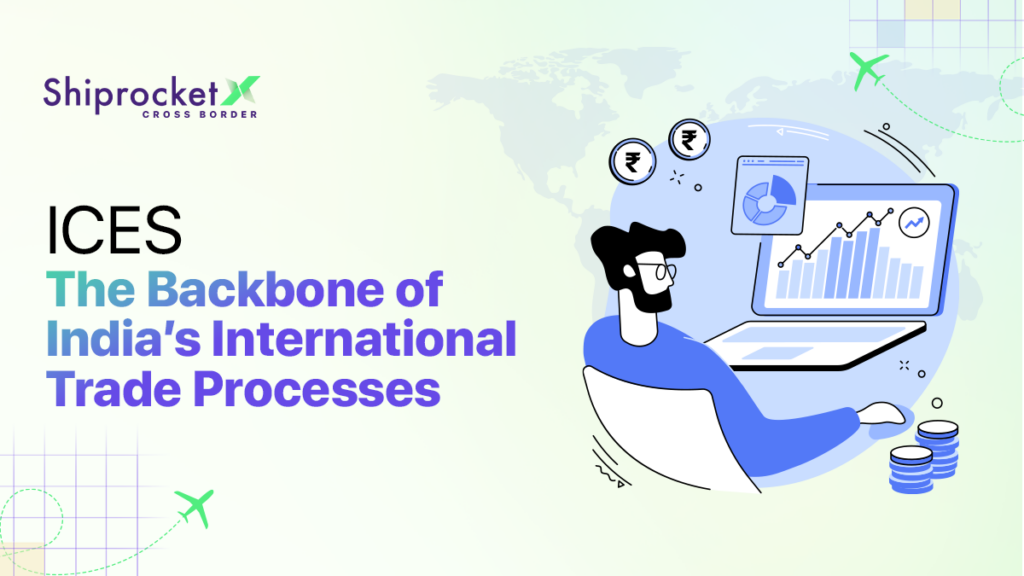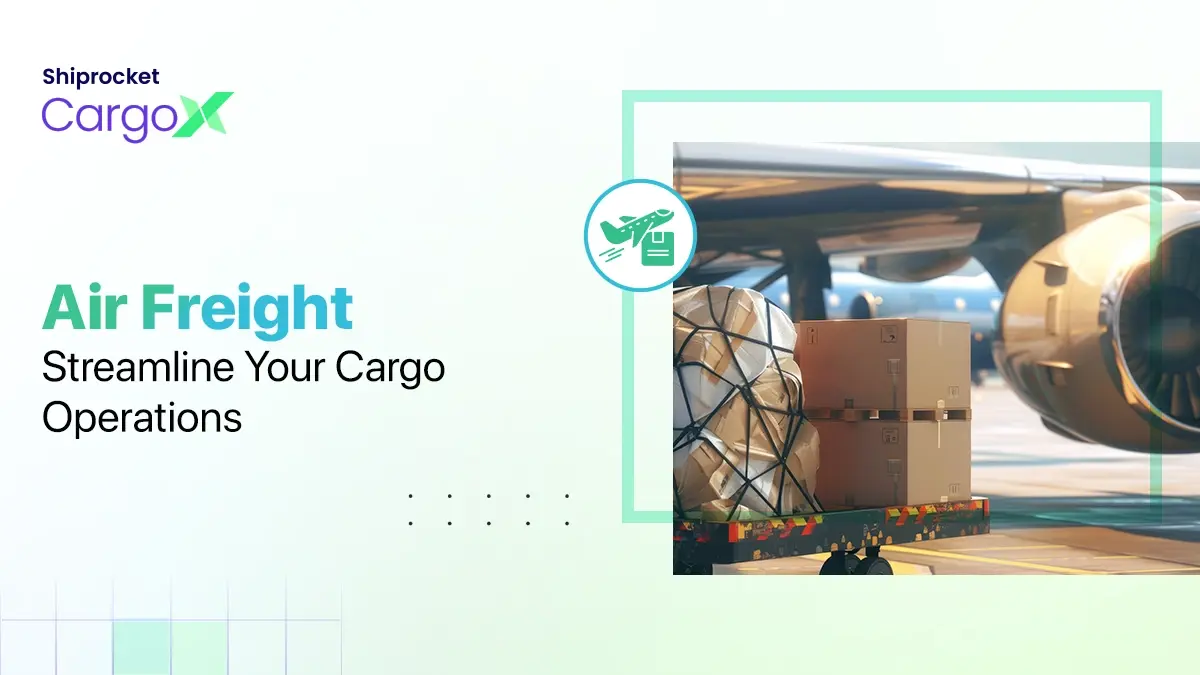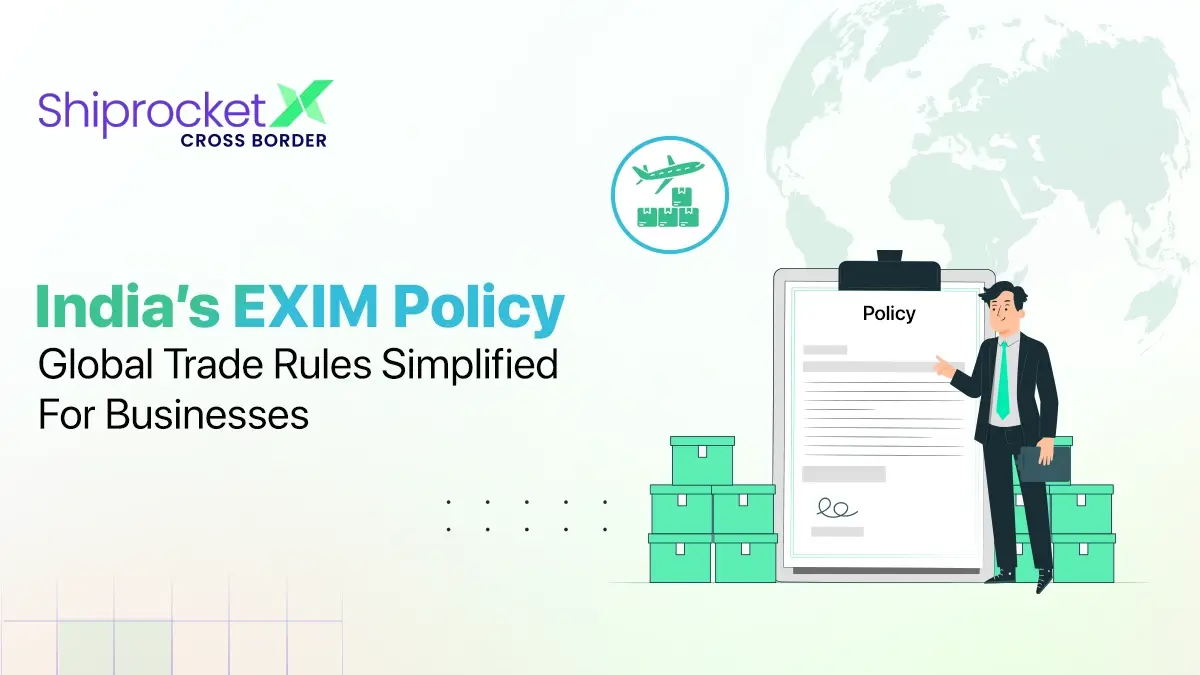Learn How ICES is Facilitating India’s International Trade Processes
ICES, short for Indian Customs EDI (Electronic Data Interchange) System, has revolutionized the international trade process in India. It has given way to paperless trade. With the introduction of this system, you don’t require visiting government agencies to fill out forms and submit documents for furthering international trade. Requests for import/export as well as the submission of relevant documents can be done electronically via this system in a fraction of a second. In this article, you will get a deeper insight into how this system facilitates India’s international trade, in addition to its aspects, components and key benefits.

What is the ICES Project?
Indian Customs EDI System was launched in the year 1995. It was a flagship project of the National Informatics Center. In the year, 1992, a systems study was carried out by the National Informatics Center and Central Board of Indirect Taxes and Customs. ICES came into being as a result of this extensive study. This system electronically connects all those involved in the international trade process with the Customs House. It is operational in as many as 256 customs locations that handle around 98% of international trade in India. The system ensures the confidentiality of data and reduces the chances of errors caused while filling and processing the documents. It has streamlined the trading process.
- Aspects of ICES
There are two main aspects of ICES. These are as follows:
- Automation of Custom House – Internal automation of the custom house facilitates a completely automated customs clearance system. This enables paperless transactions and boosts efficiency.
- Real-time Electronic Interface – An online electronic interface with real-time information related to the customs clearance of import and export cargo via ICEGATE is available across the banks, transport authorities, trade and regulatory agencies.
- Components of Indian Custom Automation
The Indian Custom Automation has three systems that are its major components. Here is a look at the same:
- ICES operates at as many as 256 locations from where it receives numerous incoming messages. These messages are automatically received and processed by ICES. Likewise, it automatically generates all the outgoing messages at the right stage during the clearance process.
- ICEGATE (Indian Customs Electronic Gateway) is a national portal that gives e-filing access to cargo carriers, trade and trading partners. It enables the sharing of trading information such as trade statistics and customs clearance data with the regulatory agencies.
- RMS, short for Risk Management System, enables compliant trade.
Benefits of ICES for India’s International Traders
ICES has made the international trade process smoother for Indian traders. Here is a look at the many benefits it offers:
- Saves Times
The introduction of ICES has made the trading process quicker. The Electronic Data Interchange system has automated the customs process. There is no need to submit the documents and forms by visiting the agencies/ offices ever since this system has come into place. The other tasks involved in the process such as drafting, storing, and delivering the documents are also accomplished electronically. Moreover, any important information that needs to be conveyed to those involved in the process is also released electronically. This facilitates quick trade transactions and helps complete the procedure in a speedy manner.
- Strengthens Data Security
The data stored on ICES remains completely secure and is not exposed to any malpractices. This is because strict measures are taken to maintain its security at various levels. This includes scheduling regular audits to ensure the safety and integrity of the stored data. These audits are meant to prevent the chances of hacking and online theft of data. Moreover, only the authorized personnel at different levels are provided access to critical data available on the Indian Customs EDI System. In addition to this, all the transactions that occur on this system are closely monitored to promote ethical use of the system. All this has strengthened data security even as there is ease of access.
- Increases Productivity and Efficiency
The customs documentation process has become completely automated with the use of the Indian Customs EDI System. This has increased the efficiency of handling and processing the documents as the chances of human error have reduced substantially. The chances of duplication and misplacement of documents have also been minimized, thereby leading to greater efficiency and increased productivity. Moreover, the trading partners have the leverage to submit their forms and documents electronically at any hour of the day at their convenience. This has given a boost to the trade. Since the process is automated, the processing and clearance time has also come down. This has led to an increase in overall productivity.
- Promotes Transparent Dealing
Indian Customs EDI System has given way to transparent dealings as the trading information is available online in real-time. It can be accessed by everyone involved in the process. Moreover, the customs laws, regulations, administrative guidelines, and all the other information about the trading process are available on ICES. The information about the taxes and duties to be paid by the importer is also shared on the system. Thus, no one involved in the trading process can bend the guidelines to suit their needs. The scope of unfair trading has decreased with the introduction of the Indian Customs EDI System, which is a major advantage.
- Improves Accuracy of Data
As the scope of human error is reduced considerably with the use of this automated system, the accuracy of data is ensured. The data captured and processed through automation is accurate. Thus, the Indian Customs EDI System provides customs documentation with accurate data. This is one of its biggest advantages.
- Ensures Quick Response
An automated system responds to queries far more quickly in comparison to a process where things are handled manually. ICES’s ability to respond quickly has had a positive impact on the trading process and is known to be one of its main benefits. The queries logged by the traders are answered quickly through the Indian Customs EDI System. This enhances satisfaction among them in addition to speeding up the process.
Conclusion
ICES has brought about a major shift in the way international trade was once carried out in India. It works on five guiding principles, including Simplification, Consistency, Transparency, Facilitation, and Accountability in the Indian Customs Department and trading community. The introduction of this system has indeed simplified the trading process in the country. It is loved owing to the various benefits it offers. The advanced system has improved data accuracy and strengthened data security in addition to promoting transparent trade dealings. It speeds up the trading process, increases efficiency and productivity, and ensures quick response to client queries.
One can register for the following types of transactions at ICEGATE:
Exports
Imports
Consol Manifest
EGM
IGM
Query Reply and modification to BE and SB
To file a Bill of Entries and other documents through ICES, you must first register to get an ICEGATE ID. It is mandatory to have an ICEGATE ID to file these documents online.
Yes, the ICES system has two sub-systems. These include Indian Customs EDI System/Imports (ICES/I) and Indian Customs EDI System/Export (ICES/E).






